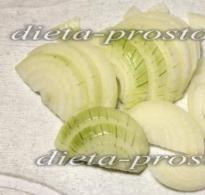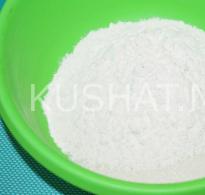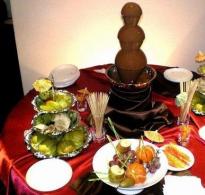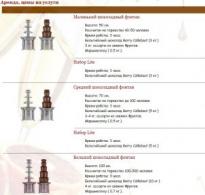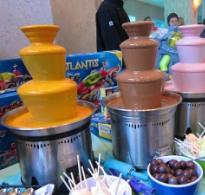Bird droppings coffee. Luwak coffee and other varieties of feces and animal droppings made in Vietnam
As you know, true gourmets are ready to give for their favorite dish sometimes unthinkable by the standards of other people means. This also applies to ardent coffee lovers, because the cost of some varieties of this drink can exceed the price of ordinary store ones by dozens of times. The most expensive coffee - what is it, and where is it produced? What is the minimum cost of exclusive Arabica?
The most expensive coffee in the world - Hacienda La Esmeralda (Panama)
Hacienda La Esmeralda coffee is revered by coffee gourmets as one of the finest coffees in the world. This variety is considered elite, grown and processed in the highlands of Baru, located in Western Panama.
In this region, the soils are flavored with volcanic ash and are well suited for growing coffee trees. Coffee produced on a Panamanian farm is considered environmentally friendly and hypoallergenic.
The farm itself was purchased in 1967 along with a large area of land by a Swedish entrepreneur. For a long time, only wild coffee trees grew on the land he bought, and only 20 years later, the family of an entrepreneur named Peters decided to grow new plants. It is here that a very rare organic coffee with an original taste grows to this day, bearing the name Hacienda La Esmeralda of the same name with the farm.
Hacienda La Esmeralda is considered one of the most expensive coffees in the world for a reason. The cost of one pound (approximately 0.5 kg) of this product is constantly increasing. In 2004, coffee was sold at auction for $35/lb, and in 2013 for $350. At the moment, the cost of packaging this coffee (almost 3,500 rubles) exceeds the cost of a regular drink by about 6 times.
Coffee Black tusk or Black Ivory (Black Ivory)
Another variety of one of the most expensive coffees in the world is called Black Ivoty (black tusk). This type of coffee is produced in an unusual way. The harvested highland arabica is fed to the elephant, after which the grains pass through its digestive tract. The stomach acid of a massive animal eats away the coffee protein, which is the main cause of the drink's bitterness. As a result, the taste of coffee from the litter is mild even in the case of strong brewing.

The high cost of the product is due to the limited volume of its annual production, because to obtain 1 kg of coffee, it is necessary to feed the elephant 33 kg of grains. This unusual coffee is produced in Thailand.
Jamaican coffee Blue Mountain (Blue Mountain)
Jamaica Blue Mountain coffee is recognized as one of the highest growing coffee varieties, because it is harvested at an altitude of 2200 m above sea level.

Not all Arabica in the vastness of Jamaica is endowed with Blue Mountain status. So called only those grains that were grown in the eastern regions of the sunny island.
The high-altitude location of the plantation allows coffee beans to bask in the sun for a long time, ripening slowly. Absolutely all Jamaican coffee is harvested by hand and processed in a wet way.
The cultivation of Blue Mountain coffee takes place in small high-altitude areas, due to which a limited amount of harvested beans is used for the export of such coffee.
This type of coffee is delivered in 70 kg barrels. The coffee association issues a special certificate that guarantees the quality of the product. This measure helps to minimize the possibility of counterfeiting the original product. Most of the harvested coffee is exported to Japan, a small part goes to England and France.
The price of coffee is about $50 for 50 grams.
Drink from Saint Helena
Saint Helena is located in the South Atlantic Ocean. Its fame is due to a historical fact: it was here that Napoleon Bonaparte, who was removed from the throne, was brought. The former ruler was very fond of high-quality coffee, therefore, before the exile, he announced that the only advantage of the place of his exile was the coffee growing there.

Without exaggeration, this product can be called the most expensive and rare coffee in the world. Its average cost is approximately 5000 rubles per 100 g of grains.
And all because of the small amount of grain harvested and the complexity of communications with a distant island. The unusual taste of local coffee is due to the maritime climate and the volcanic composition of the soil.
Vietnam is the second largest coffee producer in the world, accounting for 18%. But most of all, coffee from the feces of animals from Vietnam is famous.
It leads a nocturnal lifestyle, sleeps during the day, choosing secluded places, for example, tree hollows. By the way, he climbs trees very well. There are 30 subspecies of this musang.
Palm civet is omnivorous, coffee is not its main food. In the diet of the animal and various other fruits, as well as insects, worms, bird eggs and even small animals.
Enzymes, due to which coffee beans processed in the stomach of an animal acquire a peculiar taste, are produced only six months a year.
Luwak coffee
This type of coffee bears this name in Indonesia, where it is also produced. In Vietnam, it is called "chon". Coffee from the feces of animals from Vietnam has become the hallmark of the country.
The fact that it was here that the business was put on stream did not reduce the price of the product, but increased the production of expensive grains due to the following:
- Special farms were created where musangs are kept.
- Animals are specially caught precisely at the time when they produce the necessary enzymes.
- During the appropriate period, the palm marten is fed exclusively with the fruits of the coffee tree.
After the period of enzyme production has passed, the animals are released into the wild. At this time, excursions are organized for tourists who are in the country, on the plantation. And they can see the whole process of producing a unique coffee.
The cost of a product is made up of several factors:
- Farmers hand-collect the excrement produced by the musangs after they have ingested the coffee fruit.
- After collection, everything must be properly processed and dried, and this is also done manually.
- The possibility of obtaining grains in a limited period of the year also increases the price of the product.
On average, luwak in Europe costs $150 per 100 grams. Often this variety is mixed with other coffee beans, which gives the drink an even richer aroma and taste.
Julia Vern 53 035 0
Coffee is a food product that is consumed in the form of a drink. Everywhere coffee is one of the most common and favorite drinks. Every day, each person's morning begins with a cup of hot aromatic coffee, it would even be difficult to imagine the beginning of a new day without it.
Coffee trees are grown in different countries, mainly in the tropical climate zone. These trees belong to the madder family and number about 60 different species.
The grains of this product include a large number of chemical substances. The main components are:
- caffeine, about 1-2%;
- ester of caffeic and quinic acid - 5-8%;
- 1% citric acid;
- 6% carbohydrates;
- 5% mineral salts.
The production of ordinary coffee differs in different ways of roasting (at different temperatures), adding impurities (which gives this or that taste of the drink), or a variety of coffee tree.
The production of the most expensive varieties of black drink has a slightly different and interesting scheme. These methods of production also influence the cost of a valuable product. So, get acquainted - expensive varieties of coffee and their production.
The most expensive varieties are obtained from animal excrement
The leader among connoisseurs of a prestigious and elite drink is coffee extracted from excrement, Kopi Luwak. The drink under this name is number one in terms of price in the whole world.
Real gourmets characterize it as a drink of real kings. It has a taste of dark chocolate and a delicate aftertaste of caramel, including a little vanilla flavor. Kopi Luwak is truly expensive, a cup of coffee can cost up to $100. Naturally, this is the price in countries far from the place of production.
Kopi Luwak production technology.
Only truly true connoisseurs know how this drink is made. This recipe is quite simple, and it just affects the cost. It is made, or rather obtained, from animal droppings. These animals are Chinese badgers or musangs. They look like the cartoon character Rikki-Tikki-Tavi, only gray in color. These badgers feed on coffee fruits, and they choose the most ripe and largest berries, collecting them both from trees and on the ground.
The ripe berry of the coffee tree has a red color and a large size. Small green grains do not attract these animals, so they only enjoy the ripe product. Badgers can consume up to 1 kg of ripe fruits per day. Eaten, basically, is digested in the body of animals, and only 5% does not have time to be digested, and they go out whole.
Coffee beans, while in the body of an animal, are processed there by gastric juice and civet. After that, the excrement that came out of the animal is collected by a person. Fruits that have not had time to be digested are selected and cleaned. After a long cleaning, they go through a process of drying and cleaning, then again a process of washing and drying. Dried grains are lightly roasted at a certain temperature. The exact recipe for preparation and processing is unknown, its producers keep it a secret.

The grains are washed several times, cleaned and roasted
An interesting fact is that the grains are selected only for six months, the rest of the six months they do not have such a taste. The fact is that the enzyme that gives coffee fruits a unique taste is secreted in animals for six months, and not for the next six months. Therefore, it makes no sense to collect coffee produced by animals at this time. More valued grains from males, as they have a special pleasant aroma.
The collected grains go through a 15-stage sorting stage. And only grains without defects are packed and sold as a whole. The rest are ground and sold crushed. This coffee is produced in southeast Asia - in Indonesia.
In Ethiopia, they tried to develop the same coffee production as in Indonesia. There are also coffee trees and similar animals, which are called viverra (civet). When tasters tried and compared these drinks, the Ethiopian version fell far short of the product from Indonesia in terms of quality.
Chon coffee variety
The second expensive variety is produced in Vietnam and is called Chon. It has a slightly different taste than the product from Indonesia, not worse in any way, just a little bit unusual. This variety is called an analogue of Indonesian coffee. Arabica and Robusta varieties are mainly used, but Catimor and Chari varieties are also less common.
Chon production technology
The main participants in the production of the product from Vietnam are Asian palm citens. They also eat coffee beans and love them very much. The technology is similar to Indonesian producers, grains are also collected from litter, cleaned, washed, fried. At the exit of whole beans from the body of the animal, about 5-7% is also obtained. It is believed that the beans that came out of these animals have medicinal properties. Until recently, people considered palm martens to be pests until they once tried to make a drink from their droppings. Now they have specially made enclosures where they keep these animals and at the same time feed them with coffee beans.
Drying of the beans, not separated from the excrement, is done in the sun, after which each grain is selected, washed and dried again. After that, they move on to the frying process. The temperature at which they are fried is not disclosed by the manufacturers.
The Vietnamese have learned very well how to combine several varieties of a product into one, and the quality does not fall, but only improves. This coffee variety includes the aroma of cocoa, hot chocolate, vanilla, caramel. In general, all the best and necessary to get a divine aftertaste. The cost of this variety ranges from 150 to 250 dollars per kilogram.

Chon variety is produced by Asian palm citens
Chon coffee recipe
There are two popular recipes for making this drink by the Vietnamese themselves.
- Condensed milk is poured into the bottom of the cup and a special filter is placed on top. A spoonful of ground grains is poured into the filter, and pressed on top with a press. After that, I pour boiling water into the cup through the filter, and an excellent drink is obtained.
- The second way is somewhat unusual. The procedure is the same as in the first case, only a long glass is taken instead of a cup, and ice is used instead of condensed milk. The drink is served cold as refreshing in hot weather.
The Vietnamese themselves consider their drink number one in the world and say that if you try at least one sip, you will never be able to refuse it.
Variety Black Ivory
Another common and expensive variety of drink is Black Ivory. Translated into Russian, it means "Black tusk". The cost of a kilogram of such grains is $ 1,000. It has its own special taste and aroma, somewhat similar to the previous two, but has an original aftertaste.
Black Ivory production
This drink is produced in Thailand. Elephants are the main producers. They are fed with ripe berries of Arabica coffee trees and receive almost finished coffee from feces. The beans that pass through the stomach of an elephant are processed by the stomach acid of this large animal. The acid is able to dissolve the protein of the coffee beans, which leads to the fact that the bitterness disappears from the finished product. Therefore, even the strongest Black Ivory coffee will never be bitter.
Curious:
The process of digestion of fruits by the stomach of an elephant takes about 30 hours. During this period of time, the grains are saturated with fruity aromas of sugar cane, bananas and everything that the animal is fed with.
To get a kilogram of undeformed grains from the elephant's stomach, he needs to feed 35 kg of ripe berries, while mixing them with other ingredients that are included in the elephant's diet. During eating, most of the grains are simply destroyed, another part is digested by the stomach, and only a small part comes out of the elephant without deformation.
Women take grains from elephant dung, they select whole grains, and then send them to dry. Drying is done in factories in Bangkok. In Thailand, 26 elephants are engaged in the production of black drink.
It is very difficult to buy a product of this brand, since it is sold only in some cities in Thailand.

Black Ivory is made with the help of elephants
Other High Value Coffees
These varieties of dark drink are inferior in price to all of the above, but are not inferior in taste.
- Coffee Yauco Selecto.
This type of coffee is obtained in the Caribbean, from Arabica. Coffee trees are grown at an altitude of 100 meters above sea level, it is there that there is an excellent climate for their growth and a rich harvest.
It is not passed through the organisms of animals, so coffee has a significantly lower cost - $ 50 per kilogram. - Starbucks.
This drink with this name appeared quite recently in 2004. Introduced in Rwanda by Starbucks. This drink has its own distinctive aroma and aftertaste. When drinking this coffee, there is a slight sourness with a different bouquet of spices. The cost of a kilogram of grains is 50-60 dollars. - blue mountain.
This type of coffee is produced in Walenford, Jamaica. A distinctive feature of the variety is the absence of bitterness and mild taste, which is very popular among the population of Japan. This variety is traditionally produced. Prices start at $100 per kilo and up.
Having considered the prices, production principles and characteristics of the tastes of each expensive coffee, the following can be noted that the most expensive varieties are the Kopi Luwak, Chon and Black Ivory brands. They have the same production principle, but different manufacturers. The production of a product by passing the grains through the stomach of an animal is very labor intensive. Both of these varieties of coffee are popular only among the rich and wealthy segments of the population.
Coffee is the favorite drink of the inhabitants of the Earth. It is with him that the morning of many Russians begins. Someone likes instant, someone - brewed coffee. Someone prefers to grind the grains himself and cook in a Turk. What can I say, it's a matter of taste. And true connoisseurs of this drink prefer to drink the most expensive coffee in the world, paying tribute to fashion and the established image of a coffee lover. What varieties are most quoted by those who are interested in this issue?
Top five
In fact, there are only two main coffee varieties - Arabica and Robusta. The former is considered to have a more subtle taste and contains less caffeine compared to robusta. The second, cheaper, with bitterness and sourness, contains more caffeine. The most common in the world is Arabica. How much does coffee cost? How is its price formed? Here are just some of the data, a kind of hit parade of expensive coffee.
Fifth place
Fifth place on this list is occupied by "Blue Mountain" - coffee, the price of which reaches $ 90 per kilogram. It is produced in Jamaica and is famous for its mild flavor without hints of bitterness. As a basis, it is used to make the famous Tia Maria liqueur.
Fourth place
The fourth is Fazenda Santa Ines. It goes up to $100 per kilo. It is produced in Brazil (Minas Gerais) by hand. It differs from others with a sweet aftertaste of berries and caramel.

Third place
The third is Saint Helena coffee (there is such an island, famous for the fact that Napoleon was in exile there). It is made from the fruits of the same Arabica, which, however, grow only in this place. Coffee is famous for its subtle fruity aftertaste.
Second place
The second place in our hit parade is "Esmeralda", the most expensive variety of coffee obtained with traditional, we emphasize, processing. The price per kilogram reaches 200 dollars! It is produced in the mountains of Panama, its western part. It has an original taste, which is believed to be the result of careful harvesting and a cool climate.
Is the most expensive coffee made from excrement?
And finally, the most "valuable" - "Kopi Luwak". You can translate the first word as, in fact, coffee. The second word is the name of the animal, thanks to which the most expensive coffee in the world appears. The fact is that it is “produced” with the help of the African palm civet is very unusual. Animals (in appearance resembling squirrels) eat the berries of the coffee tree. Further, everything passes through the intestines of the civet, while the coffee beans remain undigested.

The most expensive coffee in the world comes from Indonesia. Its plantations are located on the islands of Java and Sumatra. The farmers of these plantations harvest the ripe fruits in the traditional manner. After that, they are fed to civets, which are kept in special enclosures. Animals eat them with pleasure. Then, when the coffee beans themselves come out with the excrement, they are cleaned, washed, and dried. Later - lightly fried.

The most expensive coffee in the world, obtained as a result of the vital activity of Indonesian civets, is famous for its very delicate aroma. Natural enzymes give it a special softness of taste. The retail price for a cup of such a drink can reach up to $50. And the cost of a kilogram is up to a thousand.

Limited supply
Every year, only about five hundred kilograms of Kopi Luwak beans enter the coffee markets. That is why he is so appreciated. It's all about rarity and elitism, and, of course, taste. With what epithets sellers and producers just do not exalt the dignity of this coffee: caramel, with a taste of cherries, the drink of the gods, with the aroma of vanilla and chocolate. In any case, this is a premium class drink, which, of course, is in good demand among the most zealous coffee drinkers, like everything elite and rare.
Historical perspective
There is even a legend about the origin of this "drink of the gods". It is said that at the time of colonization, planters forbade workers from taking coffee beans from plantations due to its high cost. Then people began to pick up coffee specially processed by civet from the ground (it was already impossible to sell it). The grains were washed, dried, ground. Brewed such coffee and drank. Then one of the white planters tried this drink for the poor. Struck by the delicate taste, he began to promote the product to the market. Since then, Kopi Luwak has been delighting drink lovers with its unique taste.

By the way, in Vietnam, for example, there is an analogue of the famous Luwak - coffee called Cheon. It is cheaper and is made in a similar way. It is said that this type of coffee has an even more pronounced flavor of beans processed with enzymes from a local variety of the animal.
african civet
Thus, the main producer of an expensive product is the civet itself. The animal belongs to the same family as the mongoose, outwardly even resembles it. Although in habits it is more like a cat. The civet spends most of its life in trees. Like a cat, she knows how to put her claws into the pads. Locals often tame civets, and they get along well with people: they drink milk, live in houses, respond to nicknames, regularly catch rodents, sleep at the feet of the owner, in general, turn into pets. This animal is also used as a source of musk used in the perfume industry. And, of course, for the production of elite coffee.

They say the best comes from the wild civets that make their way to the plantations at night. And in the morning, farmers, as a thank you from the animals, collect excrement under the coffee bushes as raw materials for the production of the “drink of the gods”. Each civet can eat up to one kilogram of coffee berries per day. "Output" it can only give up to fifty grams of processed grains. I must say that civets eat animal food, and not just berries. In the diet of domesticated civets, for example, chicken meat is present. These are nocturnal animals. And they generally don't breed in captivity. Among other things, the enzyme, which coffee lovers like so much, animals can only produce for six months. The rest of the time they are kept "for nothing" or even released into the wild so as not to feed in vain. And then they catch it again.
A new word in the production of coffee
At the moment, according to some reports, civet has given way to elephants, from whose excrement, it turns out, elite coffee is also produced in Thailand. The technology is similar, but this type of coffee is called "Black Tusk"! Bon appetit everyone!

